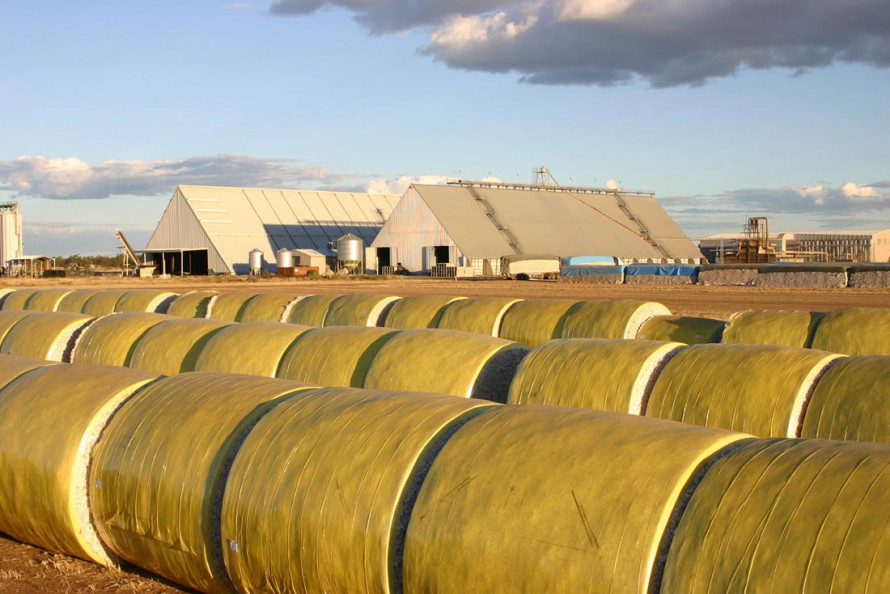Cotton prices will edge up to their higher in five years next season, the International Cotton Advisory Committee forecast, as it cut its forecast for inventories to the lowest since 2011-12.
The intergovernmental group, in its first forecast for cotton prices in 2018-19, which starts in August, saw them averaging 84 cents a pound, as measured by the Cotlook A index of physical values.
That would represent a small improvement from the price expected for this season, which Cotlook hiked by 5 cents a pound to 83 cents a pound.
The group failed to elaborate on the reasoning behind the upgrade, although it follows consistently higher prices than many commentators had envisaged earlier in the season, with the Cotlook A closing last week at 89.95 cents a pound.
The 84 cents-a-pound cotton price the ICAC forecast for next season would also be the highest since 2013-14, when prices averaged 91 cents a pound, before tumbling to 70 cents a pound two seasons later as China curtailed imports and focused on drawing down bloated state inventories.
‘Environmental damage’
The ICAC’s price forecast came as it trimmed by 220,000 tonnes, to 17.93m tonnes (82.4m bales), its estimate for cotton inventories at the close of 2018-19.
Stocks at that level would be the lowest since 2011-12, when US inventories were recovering from a 20-year low.
The committee, highlighting a “positive” short-term outlook for the cotton market, flagged the prospect of accelerating growth in demand for the fibre, seen increasing by more than 1.1m tonnes next season, after an 880,000-tonne rise in 2017-18.
“Consumption – which has steadily increased over the last three seasons – is expected to continue rising,” the ICAC said.
It noted factors including “the rising production costs of synthetic fibres and growing awareness of the environmental damage being caused by microfibre pollution”.
‘Threats of pests and inclement weather’
Meanwhile, cotton output will ease next season by 320,000 tonnes to 25.35m tonnes (116.4m bales), the committee said, cautioning that “the threats of pests and inclement weather remain concerns.
“This season, the world’s largest producer, India, suffered yield losses due to a pink bollworm infestation and is expected to decrease to 12m hectares in planted area in 2018-19.”
While US sowings are expected to rise this year – with US Department of Agriculture on Friday, in a much-watched spring plantings report, putting them at a seven-year high of 13.6m acres – “drought conditions will need to be monitored closely,” in Australia as well as the US, the ICAC said.
The USDA overnight - while reporting sowings in Texas, the top US cotton-growing state, at 11% complete, 6 points ahead of the average pace – flagged the continued threat to prospects from dry soils.
“Cotton producers in some areas of the Northern High Plains were undecided about planting cotton this year due to the shortage of soil moisture,” USDA scouts said.
ICAC vs Cotton Outlook
The ICAC estimates for 2018-19 show, at 1.17m tonnes, a far greater drawdown in world cotton stocks than expected by Cotton Outlook, which last week trimmed its forecast for the decline by 10,000 tonnes to 573,000 tonnes.
Cotton Outlook was, in particular, more upbeat on production prospects, which it upgraded by 180,000 tonnes to 26.13m tonnes (120.0m bales), nearly 800,000 tonnes ahead of the ICAC forecast.
The analysis group, which is behind the Cotlook A index, flagged “changes for Brazil and some smaller markets”.
Irrigated vs dryland
For Australia, meanwhile, the current harvest is seen as having a mixed outcome, with Louis Rose at Rose Commodity Group noting that reports “continue to relay impressive yields on irrigated fields.
“Reports from non-irrigated fields are mostly significantly lower than their irrigated counterparts.”
Separately, a report overnight from the USDA bureau in Canberra pegged the 2017-18 harvest at 4.04m bales, 13,000 bales shy of the USDA’s own forecast.
Sowings were pegged at 473,000 hectares – more than 100,000 hectares short of the USDA’s official figure – but with the loss in non-irrigated areas.
“The national average for irrigated cotton is around 10 bales per hectare. Yields on dryland cotton are much lower,” the bureau said.


